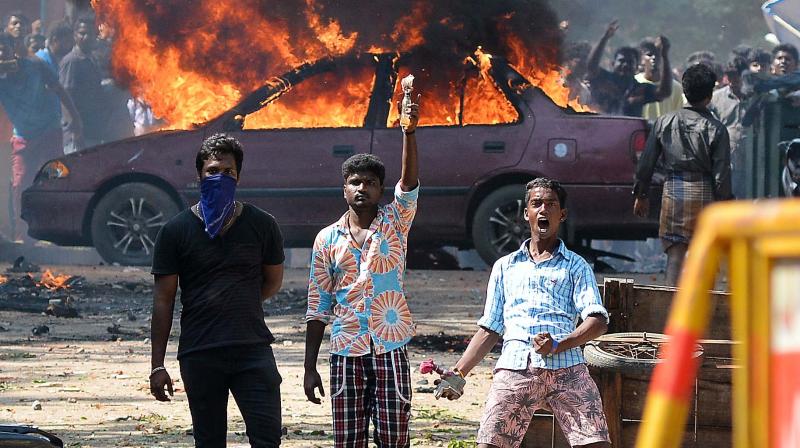With people and for people on Jallikattu
The jallikattu agitations in the Marina caught the attention of national media only after January 17.

Chennai: The Deccan Chronicle was the first to spot the protests for jallikattu as a historic one and predicted in the very beginning of the agitation that it would be similar to the 1965 anti-Hindi agitations in the magnitude of support and intensity.
Whether it be Chennai or Madurai, the origin of the agitations, our team was the first to know the pulse of the people, report it extensively, even when the rest of the media were hardly aware of the protests.
The jallikattu agitations in the Marina caught the attention of national media only after January 17, but the Deccan Chronicle had carried its first report on January 10. The report started with the words “With youth and students jumping onto the protests demanding the lifting of jallikattu ban and even trying to defy the Supreme Court ban on the traditional sports at several places in Tamil Nadu, the situation seems to have a parallel with the fiery anti-Hindi agitations of the mid sixties”.
Two days after the DC report, top political leaders including DMK working president M.K. Stalin started comparing the protests to the anti-Hindi agitation of 50 years ago. Other papers took up the issue a week later, but the DC team with its expertise in feeling the pulse of Tamil Nadu and reflect the hearts of Tamilians foretold the onset of a storm when a few thousand had gathered at the Marina on January 10.
Besides bringing out the sheer magnitude and the undercurrent of Tamil identity of the agitations, Deccan Chronicle was on the side of the people, expressing the spontaneous nature of the outpouring of passions of young Tamilians, who saw the sport as a symbol of Tamil pride and culture.
Even before the storm reached the shores of Marina, the epicentre of the agitations was in Madurai, where the DC covered it elaborately from the origin.
The first report of the agitations in Madurai region was given on December 22 itself. The DC team was on the ground, reaching far off villages and reporting every moment of the struggle every day. The traditional women of South Tamil Nadu rarely step out of their houses, but the spontaneous gathering of girls and women in the protests at Alanganallur, Avaniapuram and Palamedu was graphically reported in DC.
The DC team spoke to the students and brought out the powerful currents of Tamil identity and Tamil pride that propelled the agitations. Besides, it also conveyed that the agitations were the culmination of the disappointment of Tamil youth on major issues like the Cauvery and Sri Lankan Tamils plight. Whether it be formation of electoral alliances or the onset of a momentous protest, DC as usual is the first to break the news and the DC proved it again this year.

